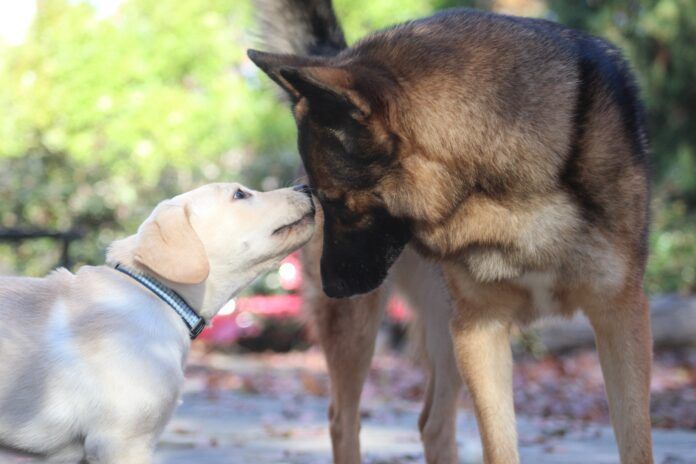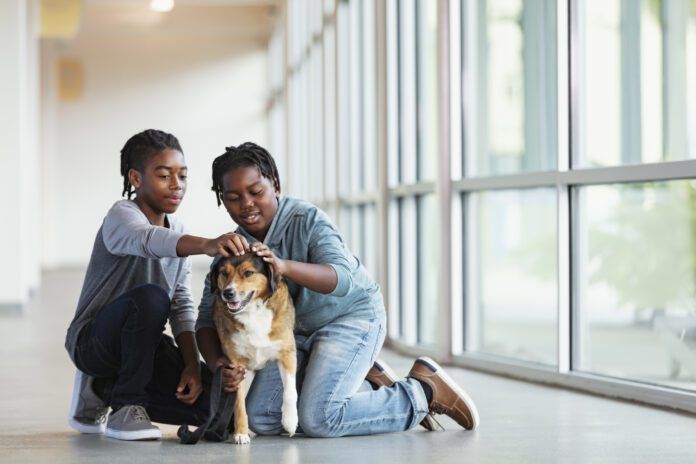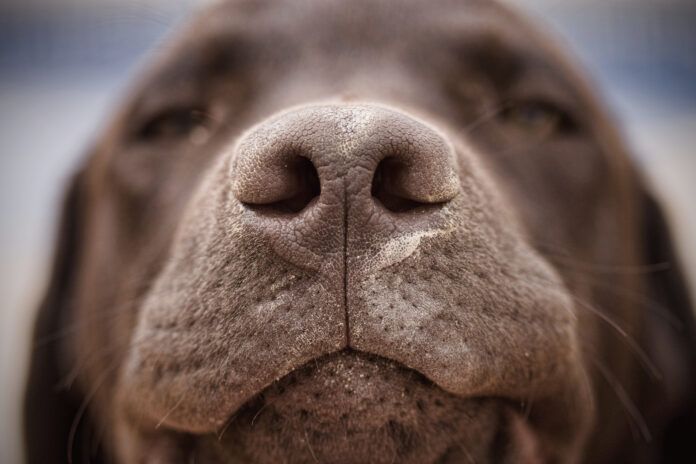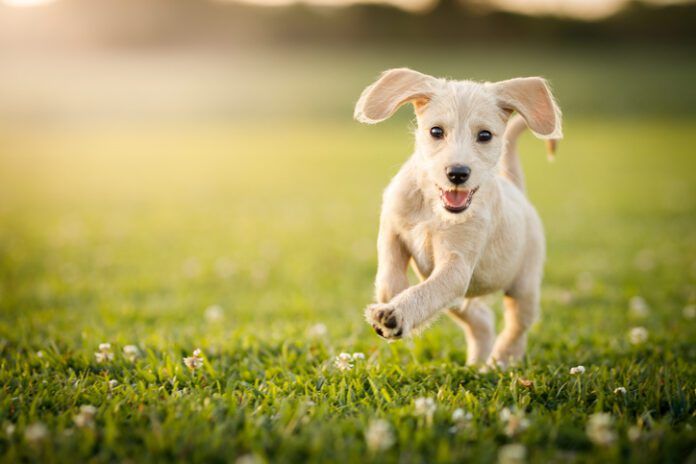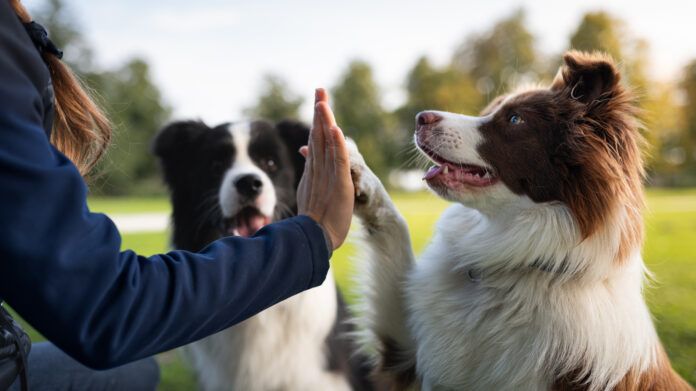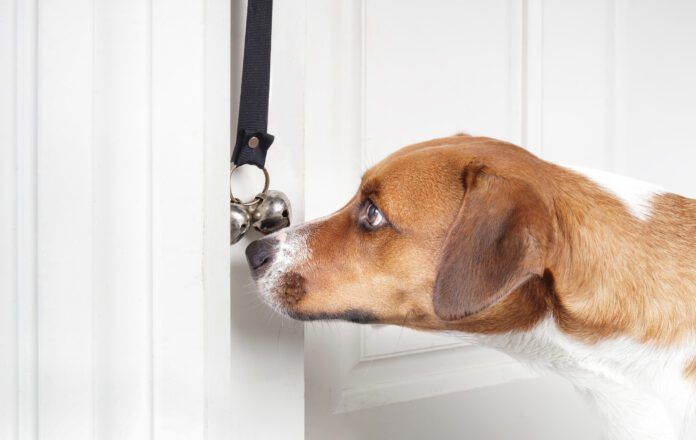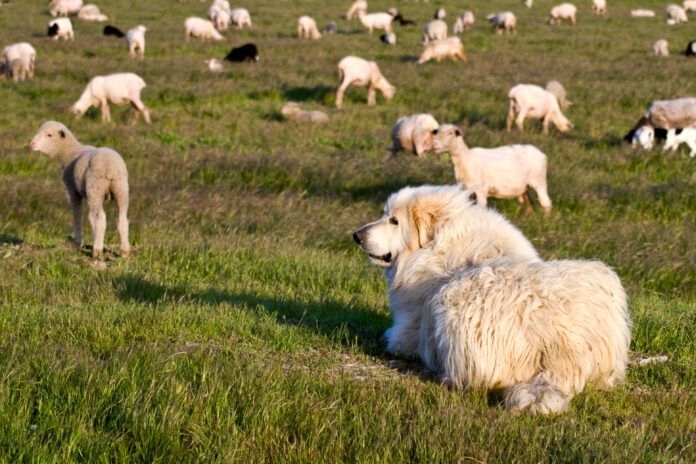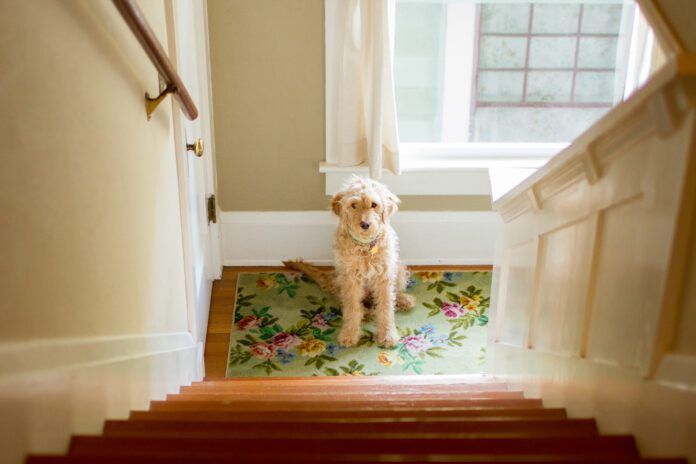Whenever there is a high-profile dog attack, it seems everyone with a dog weighs in with their opinions about the dog, the dog’s origin, the owners, the specific situation, and the resolution of the event. People share their opinions, variously blaming each party (again, the dog, the place where the dog came from, the owners, the situation…), with almost no useful or accurate information about preventing or dealing with canine aggression resulting from the account or coverage of the event.
We were just presented with an opportunity to use an upsetting high-profile incident as an educational tool. Someone sent us a link to a March 17 Instagram post by Sean Lowe, an American TV reality show personality best known for his role on the 17th season of ABC’s The Bachelor. In the post, Lowe sat with his wife by his side and described two incidents involving their dog Moose, a 7-year-old Boxer the family adopted last Christmas (about three months ago). Lowe was badly bitten by Moose in attacks that occurred just a few hours apart; the dog has been removed from the home to an as-yet undisclosed disposition.
How can a dog who was a much-loved and -trusted companion to a family with three small children suddenly turn on and maul a member of that family—not once but twice? Though every dog owner and trainer alive will express their own opinions, the only people who are professionally qualified to find the answers are veterinary behaviorists, who have advanced education and training in medical and and behavioral diagnosis and treatment.
In an effort to help people understand what factors can contribute to seemingly uncharacteristic aggressive behavior in dogs, and offer information about how to appropriately and safely deal with a dog who has aggressively mauled a human or another animal, we asked a veterinary behaviorist for his professional insights. Chris Pachel is a doctor of veterinary medicine (DVM), a board-certified Veterinary Behaviorist of the American College of Veterinary Behaviorists (DACVB), and a Certified Animal Behavior Consultant of the International Association of Animal Behavior Consultants (CABC). He is also the owner of the Animal Behavior Clinic in Portland, Oregon, where he and several other veterinary clinicians help people with their animals’ behavior problems.
A Thorough History Is Needed
One of the first things Dr. Pachel wanted us to understand is that an aggressive animal incident cannot possibly be explained from the victim’s or onlookers’ accounts alone. If he or another veterinary behaviorist was engaged by a dog’s owner in the aftermath of a traumatic incident, they’d start with the story of the incident, but then do a deep dive into the dog’s medical, training, and life history. Since Dr. Pachel did not have an opportunity to interview Lowe or examine the dog or the dog’s records, his comments here are speculation meant to demonstrate how complex it is to draw accurate conclusions about what really happened to precipitate the incident.
“It’s never as simple as the story that the witnesses tell,” Dr. Pachel says. “If I were seeing this dog clinically or working with a client on the on the heels of this event, there is much more information I’d need to make an informed diagnosis and recommendations for the treatment or outcome of the dog.”
How Veterinary Behaviorists View Aggressive Behavior
In almost every news story in both print and on TV, the phrase “vicious dog attack” was used in relation to Lowe’s incident. However, Lowe himself described Moose as a loving dog, ordinarily devoted to following Lowe around the house, accompanying him on walks and errands, and just wanting to be petted. But, shortly after a smoke alarm started blaring in Lowe’s home, Moose attacked his owner, causing serious injuries that require a trip to a hospital emergency room. The next day, after being locked out of the house overnight, the dog pushed through several doors and attacked his owner again—again causing serious injuries.
Animal behavior experts are unlikely to use the word “vicious” to describe a dog who usually presents as friendly and comfortable with humans but suddenly bites or even mauls a person. That word, which means deliberately cruel or violent, implies that the animal made a conscious, intentional decision to attack. That’s an improbable thing for a dog who is ordinarily so friendly that he has been trusted to sleep with and play with three small children daily for months.
In most cases where a dog’s behavior became quickly and drastically aggressive, there are precipitating events that exponentially increased the likelihood of such a behavior change—but the events are often evident only to canine behavior experts, or revealed in retrospect under questioning. In the case of Moose and Lowe, there was one obvious trigger—an “insanely loud” smoke alarm siren going off in the house, caused by smoke from an outdoor barbecue wafting into the house from open patio doors. However, it’s highly likely that there were several and perhaps many more factors that had pushed Moose into a stressed, hyper-aroused state well before the alarm went off.
“Trigger stacking” is the phrase that behaviorists and trainers often use to describe the phenomenon that occurs when dogs are exposed to a number of stressful stimuli in a relatively short period of time (from hours to days), leading to heightened anxiety, fear, and aggression. While in Moose’s case, the smoke alarm may have been the factor that tipped his behavior into aggression, the “stack” of factors contributing to Moose’s fall into aggression probably started hours earlier.
Contributing factors could have included anything from the doorbell going off earlier as the barbecue guests arrived, the mere presence of Lowe’s friends in the house, loud and/or boisterous voices, the proximity of high-value food (meats on the grill!), and/or the presence of alcohol and/or smoke from cigars or cigarettes. “All of those are potentially cumulative and sequential arousal triggers,” says Dr. Pachel.
In Lowe’s account, it was the blaring of the smoke detector that “flipped a switch” in Moose. But Dr. Pachel noted that in Lowe’s account of the incident, there was a progressive escalation in Moose’s behavior. Lowe said when the smoke siren began blaring, he grabbed a dish towel and was waving it at a smoke detector in an attempt to clear the air when Moose grabbed at his hand, prompting Lowe to tell the dog, “No!” Then, he described, Moose started biting at Lowe’s feet—a behavior that he stated that Moose had done before, but not this intensely. This prompted Lowe to use a more stern “NO!”—and, Dr. Pachel observed, “That was when the conversation changed.” At that point, Moose aggressively grabbed Lowe’s arm, biting deeply, and causing Lowe to feel that he was fighting his dog for his life.
Lowe was eventually able to wrestle Moose into the back yard and close the door; he was then transported to a hospital for treatment. It’s not explicitly described, but it sounds like Moose was left outdoors overnight. The next morning, Lowe described that his parents came to take Lowe’s three children to their home while the next steps for Moose were being decided. In Lowe’s account, as the children were getting into the grandparents’ car, Moose somehow pushed open the back door to the house, and ran through the house and out the front door, making a beeline for Lowe and attacking him again. This time, Lowe and his parents were able to restrain the dog until police and animal control officers were able forcibly take the dog into custody. (Moose’s current status has not been disclosed.)
When a dog is involved in a violent interaction, his body is often flooded with cortisol, adrenaline, and norepinephrine. These “fight or flight” chemicals make the dog’s heart beat faster, increasing his blood pressure and blood sugar, and giving him more strength and energy. This physiological reaction occurs in response to a perceived threat to survival—and takes some time to dissipate. After a trauma, the dog’s cortisol and adrenaline levels may remain high for many hours, keeping the dog in an abnormally reactive state for some time. After a violent incident, it’s critical to truly secure the dog and seek help from professionals (see sidebar, “What to Do Immediately After a Dog Attack.”)
What a Veterinary Behaviorist Would Investigate
Though commenters on Lowe’s social media feed and news articles about the attack all seem to have strong opinions about what caused Moose to behave aggressively, a veterinary behaviorist will first collect a lot more information about the dog and his history before making any recommendations.
“If this family came to me with this incident, before I’d make any speculation about the cause of the event or recommendations for the dog, I’d want any pre-adoption records that may be available, any medical history, any training history,” Dr. Pachel says. Of course, in the case of a 7- or 8-year-old dog who was adopted from a shelter just three months prior, “We’ve got seven to eight years of learning history that are a black box; we have no way of knowing if the dog has history of any significantly traumatic events or forceful, scary, or painful training.” That said, in his experience, he has often observed that dogs who have had a learning history or experiential history that included painful or aversive outcomes from confrontational interactions from humans will frequently respond with defensive aggression to a stern verbal directive.
“I don’t know how much time elapsed between the smoke alarm starting and Moose’s aggressive response, but it doesn’t sound like it was ‘immediate,’” says Dr. Pachel. “I have a strong suspicion that there was actually more of a back-and-forth conversation. The noise of the smoke alarm may have been the source of arousal but I suspect that the reprimand-based interaction in the face of all of the arousal and chaos that I’m presuming was happening may have been at least a contributing factor.”
Even lacking any pre-adoption history, a veterinary behaviorist would collect information from the dog’s owner about the time that they have spent together—and this often includes information that the owners are unaware could be relevant to the dog’s abnormal or aggressive behavior.
“I’d want to know everything about the three months the family spent with the dog,” Dr. Pachel says. “The playful foot-biting thing that Lowe mentioned; what did that look like? Were there any family situations that the dog seemed uncomfortable with? All of that information has the potential to dramatically change the story from the armchair speculation that runs rampant in situations like this.”
Sometimes, there are clues in small things that the dog’s owner never realized were a sign of the dog’s stress or discomfort. For example, Dr. Pachel says, “Many dogs have a negatively conditioned association to smoke alarms or other alarm-type sounds; was this dog sensitive to the microwave, electronic beeps, cell phone sounds, or any other low battery alarms? Did he have a pre-existing history of arousal with food, visitors, doorbells, having mom and the kids away? Some dogs are sensitive to the presence of alcohol! I’ve had patients in my practice who are accepting of all sorts of human behavior unless alcohol is involved—and then everything is escalated in terms of the dog’s perception of threat. Just the presence of alcohol is significantly relevant from the dog’s learning history standpoint.” (Note: In Lowe’s account, he did not mention whether alcohol was present at the barbecue.)
Being veterinarians, veterinary behaviorists also collect as much information as possible about the dog’s physical history. “We know from recent research on the comorbidity between chronic pain—even at a low level—and older-onset noise-sensitivity or noise-aversion patterns that pain can induce an anxiety component. Did the dog have any medical conditions that could have been contributing to chronic pain or stress? Even perfectly healthy dogs can have behavior issues, but dogs who are not metabolically and neurologically healthy and normal are even more likely to exhibit abnormal or aggressive behavior,” Dr. Pachel says.
What a Veterinary Behaviorist Can Offer After an Attack
Moose’s owners have not yet disclosed what Moose’s outcome was or will be, though some reports have him currently staying at a secure boarding facility. There is a wealth of advice from commenters recommending either that Moose should be euthanized or given a chance to live out his days elsewhere. Once again, we’d recommend that owners of a dog who did something similarly violent consult only with a veterinary behaviorist, whether to help make a decision regarding the dog’s future—or to deal with a decision that’s already been made.
After a thorough history and examination of the dog has been completed, a veterinary behaviorist’s report will include the professional’s opinion about the dog’s behavior, and discuss risk factors that affect the likelihood of achieving a safe and successful outcome for the dog and his owners. If the owner decides to keep the dog, the clinician will develop a treatment plan, typically addressing the dog’s physical management, behavioral interventions, diet, exercise, and medication. Little is left to chance—but the owner will be primarily responsible for seeing such a plan through and keeping the veterinary behaviorist apprised of the dog’s progress or lack thereof. The clinician can also give the owner information about alternatives to treatment, such as rehoming or euthanasia.
“I got into veterinary medicine because of animals, but I got into behavior because of the people,” says Dr. Pachel. “After an incident like this, it can really help a family to help them understand what happened. This can both alleviate their anxiety about all the ‘What ifs?’—such as, what if the kids had been home and he attacked one of them?—and potentially inform their future interactions with dogs. Sometimes in the aftermath of a traumatic event it’s highly therapeutic to bring the entire family into the dialogue to help them understand what happened, allow them to express some of their concerns and anxieties, and bring some closure to the event.”
What to Do Immediately After a Dog Attack
If you’ve ever witnessed a bloody dog fight or dog attack, you probably remember the scene as chaotic and disordered. People often respond with screams or yelling and try to counter the dog’s violence with violence of their own—and in the immediate aftermath of such an event, the focus is often on any injured humans or victim animals.
We’d like to suggest that the very first priority is securely containing the dog who attacked. Putting the dog outside is woefully insufficient; putting the dog in a room or garage is a little better, but be advised that dogs who have been through a traumatic event and are physiologically aroused—full of adrenaline—are extraordinarily strong and may react quite abnormally for hours or days. Dogs in this state may jump or climb fences they were previously safely contained in, or chew and claw through hollow-core doors they never before challenged. Getting them into a strong crate, a room with a solid door (and inaccessible windows), or a car should be the first priority.
While the wounded are being transported for medical evaluation and help, summon professional help to deal with the dog. If the attack happened during regular business hours, contact your local animal control office; after hours, one generally has to call the local police or sheriff’s department, who will decide whether they will summon the animal control officers on call or try to deal with the dog themselves. If at all possible, insist on help from animal control officers, who will be equipped with the experience and special tools that they can use to capture and extract a dog who is still hyper-aroused and aggressive. (Law-enforcement officers who lack experience with dogs are all too likely to shoot dogs—sometimes even the wrong dog.)
If professional help is not immediately available, be extremely cautious about approaching the dog over the next hours or even the next day. After a traumatic event, the dog may suffer from sky-high cortisol levels for days. Do not permit children or elderly or infirm people near the dog, and maintain the dog’s secure containment until he is either taken into custody by an animal control officer for a quarantine or until it’s clear that the dog is entirely himself again and can be safely quarantined at home (if appropriate). Note: It is not safe nor appropriate to quarantine a dog in a home with small children in it.
Once the wounded have been treated and the dog is secure, the next step is to confirm the dog’s rabies vaccination history, because the dog’s vaccination status will effect the treatment of anyone who got bitten. If you don’t have the dog’s complete medical history, get as much of the history as you can as quickly as you can.



